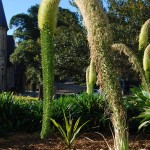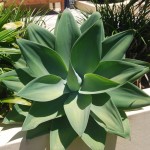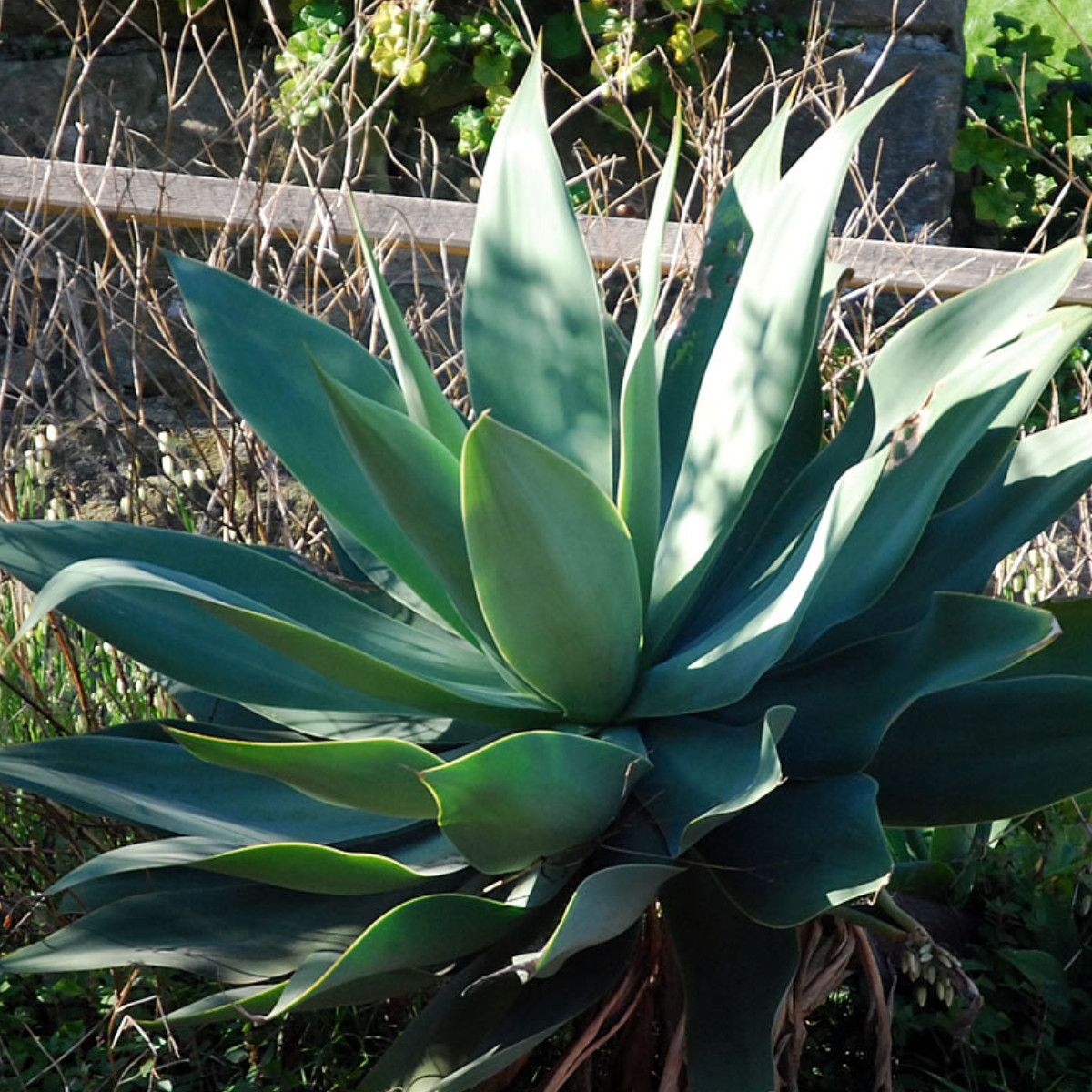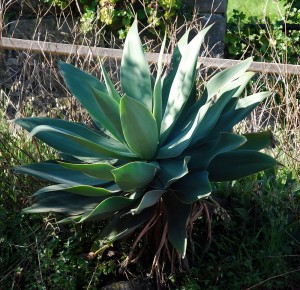Family: Asparagaceae
Description: Agave attenuata is a native Mexican plant that forms rosettes of succulent-like, soft fleshy, lime green to bluish leaves. The 60cm (23 inch) leaves are somewhat translucent, with no spines. It will clump to about 0.9 to 1.2m (3 to 4 feet) tall and wide. Flowers are greenish yellow on dense arching spikes 3-7m (12-24 feet) long which has a fox tail shape. Blooming appears in spring or summer. It may take up to 10 years for the Agave attenuata to bloom.
Agave attenuata is a plant that is much overlooked in pot culture.
Proper Care: Agave attenuata are one of the easiest plants to establish and maintain.
Light: Agave attenuata grow in full sun to shade. Provide the sunniest possible position for Agave attenuata. But if a plant was subject to shade treatment, it should be acclimatised to full sunlight gradually by moving the plant first into bright light for a week or two. A sudden change in light intensity can burn the foliage.
Agave attenuata is an excellent house plant for southern exposures.
Watering: In general, these are not easy plants to overwater as are many other succulents, but some exceptions exist. And they are not plants that are easy to underwater either, though no agave can exist forever without at least some water. Anyway, Agave attenuata will thrive in periods of dryness, thus is a very easy to maintain plant. Watering thoroughly once a week in the summers (more often in plant is in full sun or and unglazed clay pot, or if you live in a hot, dry climate) is usually fine, and less often, to hardly at all, in winters.
Temperature: Tolerates seaside conditions but it will usually be damaged in temperatures much below -2C (28F).
Agave attenuata will do best if kept at normal room temperatures during the growth period and in a rather cooler environment 10-13C (50-55F) throughout the rest period.
Feeding: Apply standard liquid fertiliser every two weeks during the active growth period.
Soil: Agave attenuata are best grown in reasonably well drained soils. When planting into pots, can be used Succulent and Cacti Mix. If planting in ground, this mix can be incorporated with your parent soil at the rate of 70% parent soil to 30% Succulent and Cacti Mix.
Potting and repotting: For pot culture it is best to use a well-draining mix in a relatively shallow pot, though Agave attenuata will do well in deep pots, too... just a waste of soil.
After several years it is recommended to change the soil. This is good time to see what is going on with the roots, as some agave roots will completely fill the pot and suckers may be crowding the mother plant. Either the plant can be moved up a pot size if this is the case, or you can remove the suckers and most of the roots and repot it back in the same pot.Agave attenuata tolerate a good deal of root abuse and reroot quickly. If there is severe root damage from the repotting procedure it is probably best not to water you agave for a week or so, and keep it out of full, hot sun until then. Do not repot in the dead of winter as that may lead to root rot. Repotting is also a good time to remove old, dead leaves, weeds and any parasites you might find near the leaf bases or on the roots.
Culture: Although Agave attenuata survives in poor soils, it does best in rich soils ( 2 parts peat moss to 1 part loam to 1 part sand). The plant is extremely drought tolerant but does better with ample moisture. As plants get older, they produce stout trunks up to 1.5m (5 feet) tall, and form clumps to 1.5 (5 feet) across.
Propagation: Agave attenuata are propagated by removing suckers produced at the base of older plants. The basal suckers can be removed in spring or summer, letting the cuttings dry for a few days before planting in compost.
Seeds germinate readily when they are fresh.
Uses: Agave attenuata is fantastic for adding interesting form and texture to garden beds. Agave attenuata have long been highlighted in gardening magazines and television shows, used as features in pots, courtyards and landscapes. They are particularly popular in modern garden designs. These Agaves are great used as feature plants in Mediterranean and modern style landscapes, pots and containers, rockeries, embankments and tropical style gardens. They look fantastic in pots on verandahs & balconies and can be planted as courtyard features. They will tolerate exposed sites and look great interplanted with other succulents, cacti, flax, bird of paradise, mondo and bongo grass. Unlike many agaves,Agave attenuata has no teeth or terminal spines, making it an ideal plant for areas adjacent to footpaths.
Agave attenuatamake excellent show plants as one can grow a relatively large, old plant in a pretty small pot. They are natural works of art and grow into very predictable sizes and shapes. Sometimes suckering is a desirable trait in a show plant.
Agave attenuata characteristics:
- Hardiness zones: 9-11
- Height: 1.5m (5 feet)
- Exposure: full sun to shade
- Low maintenance






